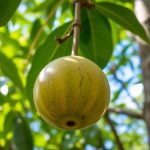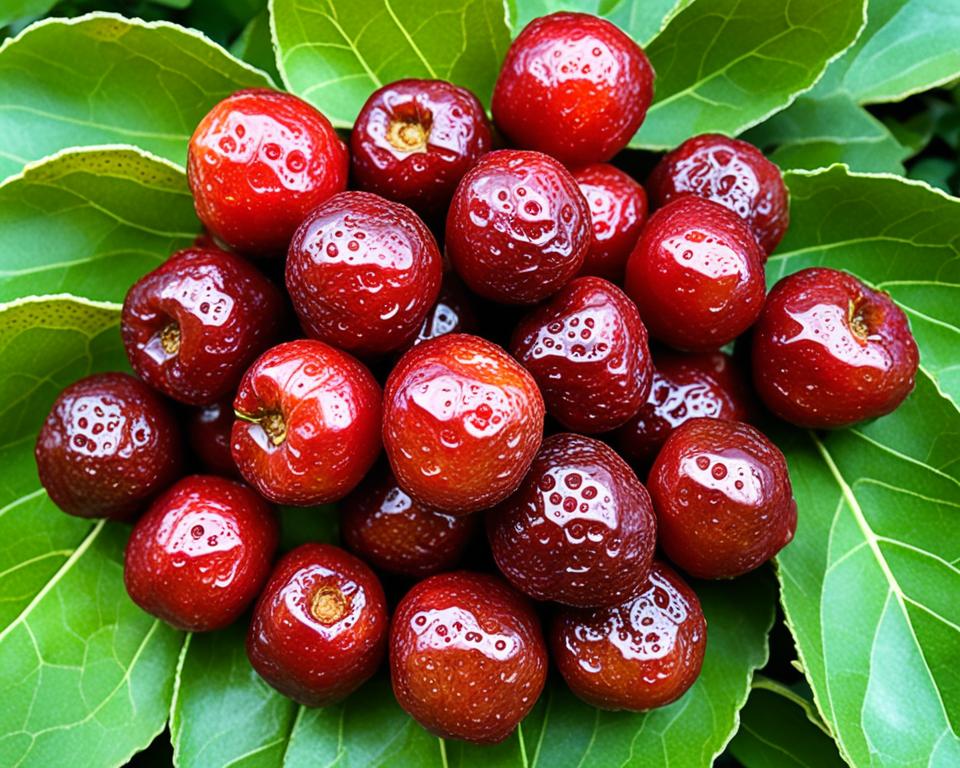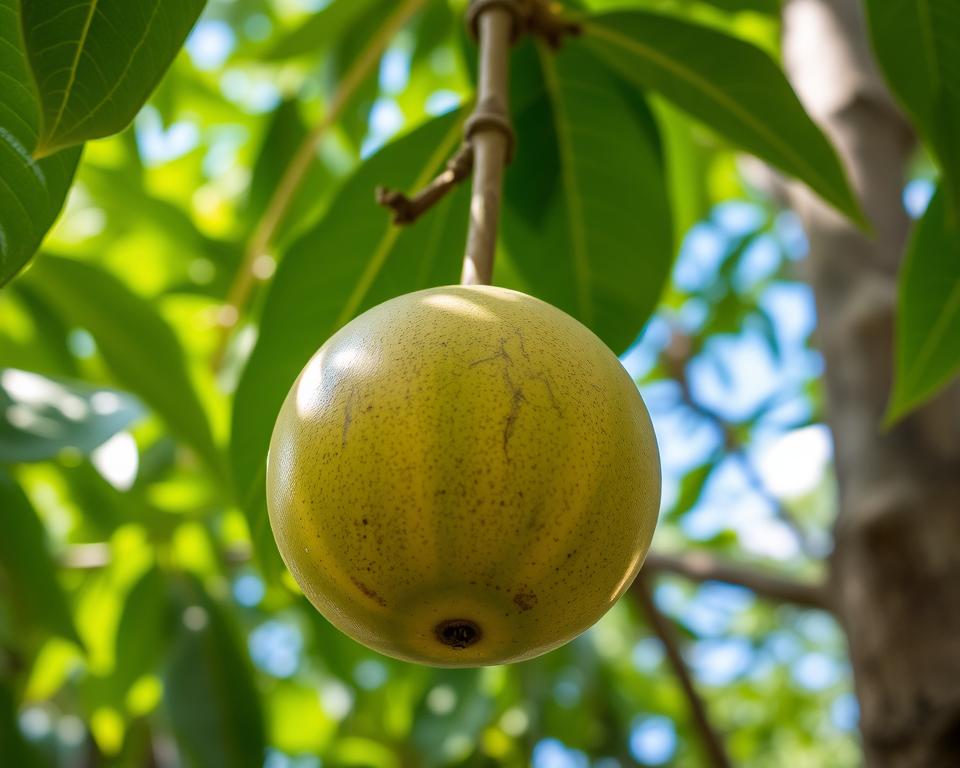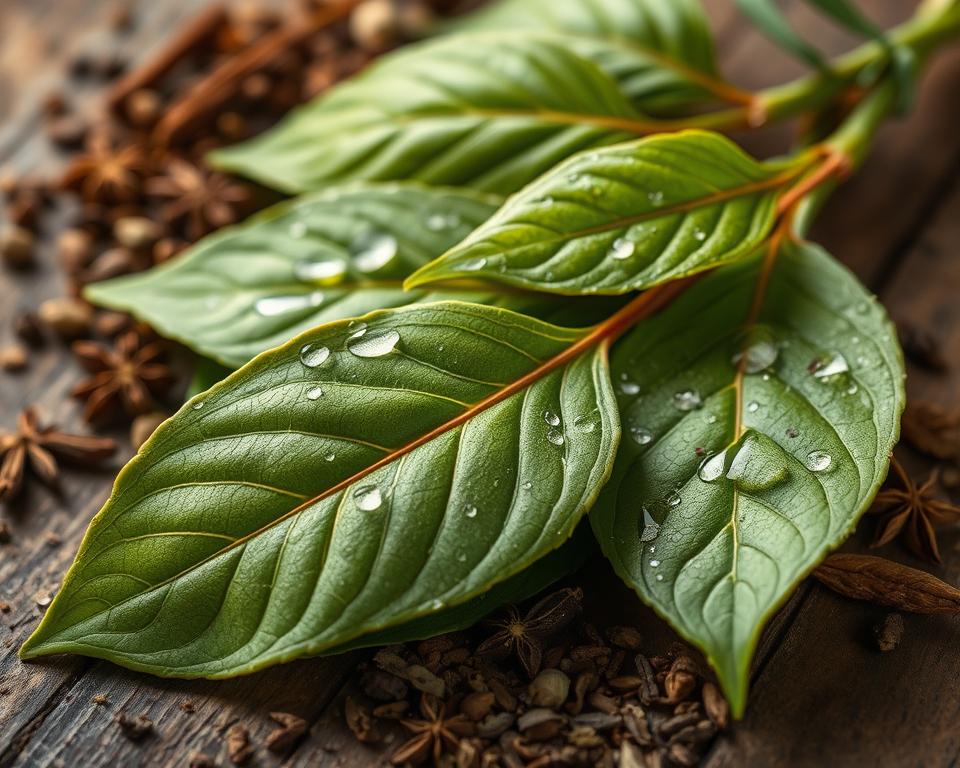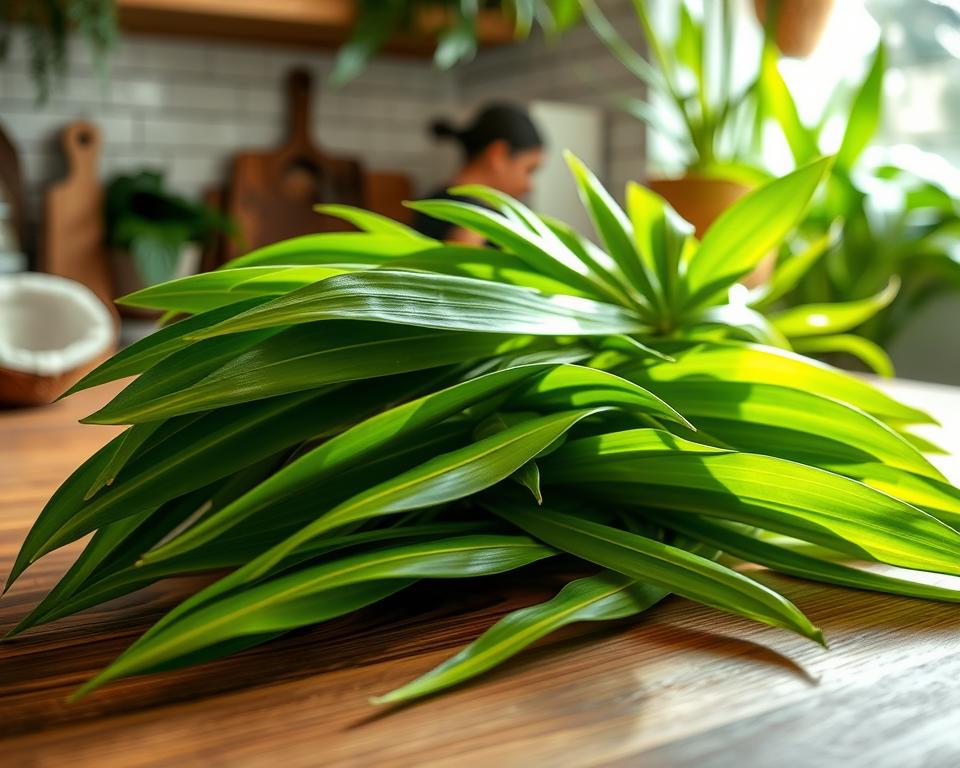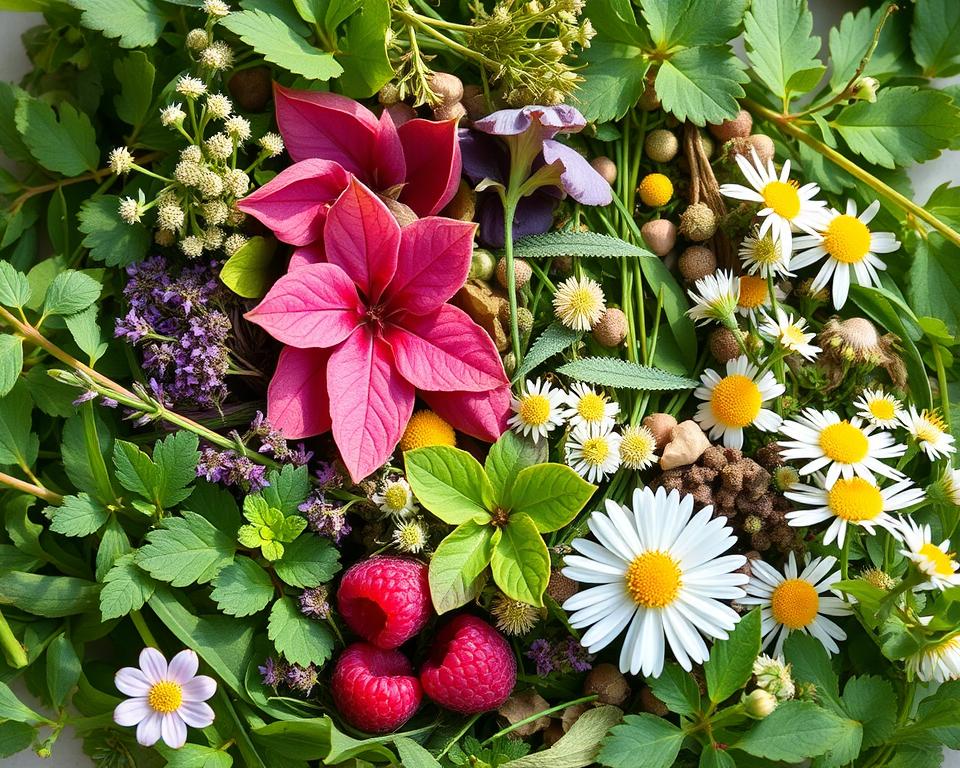The jujube, also known as the Chinese date or red date, is an ancient superfruit. It has a long history and is full of nutrients. It comes from Asia and has been valued for its taste and health benefits for thousands of years.
This guide will cover the jujube’s botanical details, its nutritional value, how it’s grown, and its many uses. It’s a superfood that’s truly unique.
Read interesting things at : tosawakan
Key Takeaways
- The jujube is an ancient superfruit with a rich history in Asian cultures.
- Jujubes are packed with essential vitamins, minerals, and antioxidants.
- This versatile fruit can be enjoyed fresh, dried, or candied in a variety of dishes.
- Jujube cultivation has expanded from ancient orchards to modern farms worldwide.
- Ongoing research suggests potential health benefits of the jujube, such as anti-inflammatory and digestive support.
Introducing the Jujube: A Superfood Steeped in History
The jujube, known as Ziziphus jujuba, has a long history. It comes from ancient China and India. This superfruit has won the hearts of people worldwide.
The Ancient Origins of the Jujube
The jujube’s story begins in China and India, where it’s been loved for thousands of years. Archaeologists found evidence that the chinese date, red date, or da zao was one of the first fruits grown by humans. This was around 2500 BCE.
In ancient China, people adored the jujube for its sweet taste. It was linked to living a long life, being lucky, and being prosperous. It was a big part of traditional Chinese medicine too. People used its fruit, leaves, and roots for many remedies.
Jujube’s Journey from East to West
The jujube spread from its original lands to the Middle East, North Africa, and the Mediterranean. There, it was called the indian plum or ber fruit. Thanks to trade and cultural sharing, the jujube reached new places. It won over new fans with its special taste and health perks.
Now, the jujube is grown and enjoyed all over the world. Its many uses and health benefits have made it a popular superfood. This has led to more people discovering the ancient joys of this amazing fruit.
The Jujube: Ziziphus jujuba’s Botanical Brilliance
The jujube, known as Ziziphus jujuba, is a fascinating tree in the Rhamnaceae family. It can grow up to 12 meters tall, with reddish-brown bark and yellow-green flowers. These flowers lead to the well-known chinese jujube fruits.
The ziziphus jujuba tree is a natural wonder. It has unique features that help it survive and spread over the years. From its deep roots to its tough leaves, everything about the jujube is designed for survival in different places.
- Adaptable Root System: The ziziphus jujuba tree’s roots can grow well in many soils, from sandy to clay. This lets it live in places with little water, making it useful in dry areas.
- Resilient Foliage: The jujube’s leaves are both pretty and strong. Their special shape and waxy coating reduce water loss. This helps the tree save water during dry or hot times.
- Drought-Resistant Bark: The tree’s reddish-brown bark is not just eye-catching. It also helps the tree survive tough conditions. The bark’s thick, corky texture keeps the tree safe from the weather.
The ziziphus jujuba tree shows how adaptable and strong this ancient fruit tree is. Its ability to survive and thrive has made it a favorite among botanists, horticulturists, and fans.
“The jujube tree is a botanical wonder, with each aspect of its structure finely tuned to thrive in diverse environments.”
A Nutritional Powerhouse: Jujube’s Impressive Nutrient Profile
The jujube fruit is more than just tasty; it’s a nutritional powerhouse. It’s full of vitamins, minerals, and antioxidants that boost health and well-being.
Vitamins and Minerals Galore
Jujube is packed with vitamins C, A, and B-complex. It gives you a big part of what you need daily. It also has iron, calcium, and potassium, making it great for any diet.
| Nutrient | Quantity per 100g | % of Daily Value |
|---|---|---|
| Vitamin C | 79.5 mg | 88% |
| Vitamin A | 159 IU | 3% |
| Vitamin B6 | 0.2 mg | 10% |
| Iron | 0.4 mg | 2% |
| Calcium | 18 mg | 2% |
| Potassium | 277 mg | 8% |
Antioxidants: Nature’s Defense Against Free Radicals
Jujube is full of antioxidants like polyphenols and flavonoids. These help fight oxidative stress and support health. They neutralize free radicals, lowering the risk of chronic diseases and keeping your body strong.
“Jujube is a superfood packed with essential nutrients that can play a vital role in maintaining optimal health and well-being.”
Adding jujube to your meals brings many health benefits. It’s full of vitamins, minerals, and antioxidants. This ancient fruit is a treasure for natural health and wellness.
Jujube: A Sweet and Versatile Culinary Delight
The jujube is more than just an interesting fruit with lots of nutrients. It has become a favorite in kitchens around the world. People love it fresh, dried, or candied.
Fresh, Dried, or Candied: Endless Possibilities
Fresh jujubes are great as a snack, offering a crunchy sweetness. They also add flavor to salads, sauces, and baked goods. Their unique taste and texture make them a great addition to many dishes.
Dried jujubes, known as Chinese dates or red dates, are popular in Asian desserts and teas. They are chewy and add a sweet-tart flavor to many dishes.
For dessert lovers, jujubes can be candied. This turns them into a chewy snack or dessert ingredient. They’re perfect for adding sweetness to various treats.
| Culinary Application | Jujube Variety | Flavor Profile | Culinary Uses |
|---|---|---|---|
| Fresh Jujube | Ziziphus jujuba | Sweet, crunchy | Snacks, salads, sauces, baked goods |
| Dried Jujube (Chinese Date, Red Date) | Ziziphus jujuba | Sweet-tart, chewy | Desserts, teas, savory dishes |
| Candied Jujube | Ziziphus jujuba | Sweet, chewy | Confections, snacks, desserts |
Whether you enjoy them fresh, dried, or candied, the jujube is a versatile fruit. It shows how much it’s loved by food lovers everywhere.
The Many Names of Jujube: From Chinese Date to Indian Plum
The jujube is a fruit known by many names worldwide. In China, it’s called the Chinese date or red date (da zao). In India, it’s known as the Indian plum or ber fruit. These names all point to the same amazing fruit.
This fruit’s many names show its global appeal and lasting popularity. It’s grown from ancient orchards in China to the busy markets of India. This fruit has won the hearts of people around the world, becoming a key part of many cuisines and traditional medicines.
Whatever you call it, the jujube is a true superfood. It’s full of vitamins, minerals, and antioxidants. Its sweet-tart taste and chewy texture make it a favorite in both savory and sweet dishes. This has made it a culinary gem.
| Name | Origin | Description |
|---|---|---|
| Chinese date | China | Also known as the red date (da zao), this variety is prized for its sweet, dried fruit. |
| Indian plum | India | The ber fruit is a popular snack and ingredient in traditional Indian cuisine. |
| Jujube | Global | The common name used to refer to the Ziziphus jujuba fruit, which is enjoyed worldwide for its unique flavor and health benefits. |
The jujube’s many names show its global love and the deep cultural history it has. Whether you call it a Chinese date, Indian plum, or just jujube, it’s a fruit loved for its taste and health benefits. It delights people’s taste buds and nourishes their bodies all over the world.
Jujube Cultivation: From Ancient Orchards to Modern Farms
Jujube cultivation has a long history, going back thousands of years in Asia. For a long time, it was done in small, family-owned orchards. These farms used sustainable methods that had been passed down for generations.
Traditional Jujube Cultivation Techniques
Farmers in traditional jujube orchards used old methods to grow these tough trees. Some common techniques include:
- Planting jujube trees in well-draining, nutrient-rich soil, often in terraced or sloped landscapes to promote optimal growth and fruit production.
- Utilizing natural fertilizers, such as composted organic matter, to enrich the soil without the need for synthetic chemicals.
- Employing manual pruning and thinning methods to shape the trees and encourage robust fruit development.
- Carefully monitoring soil moisture levels and relying on rainwater or minimal irrigation to sustain the orchards.
- Implementing traditional pest management strategies, like the use of beneficial insects and natural repellents, to protect the jujube trees without harmful pesticides.
As more people around the world started to like jujubes, modern farming grew too. Now, big farms use more advanced methods to produce jujubes. But, many growers still value the old ways, keeping the jujube’s history and special qualities alive.
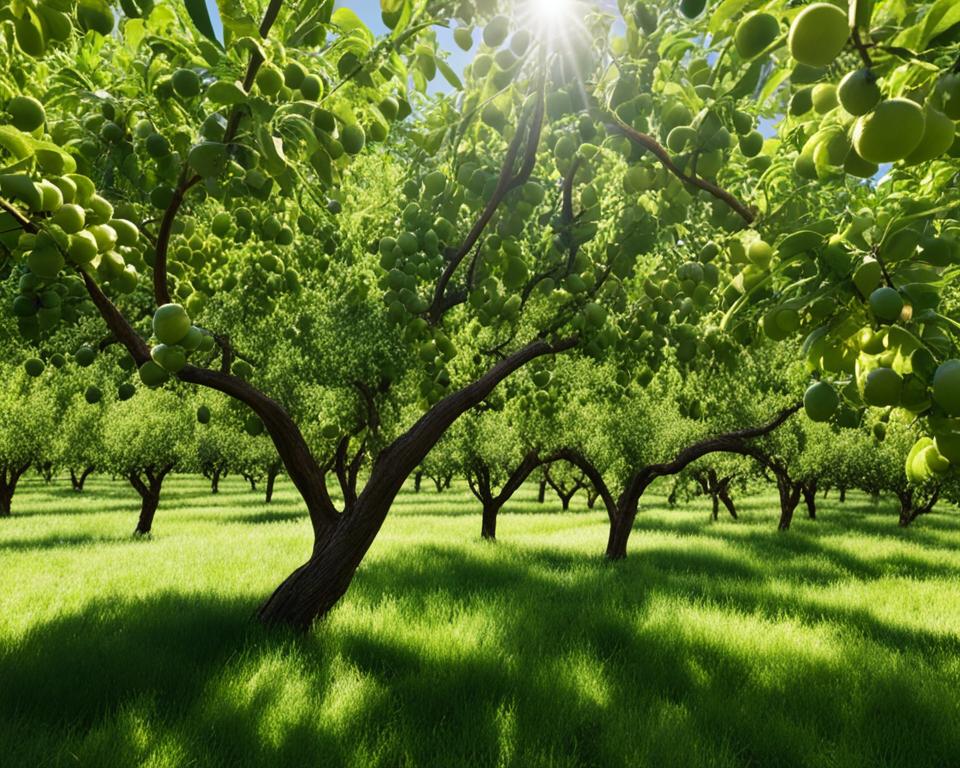
| Traditional Jujube Cultivation | Modern Commercial Jujube Cultivation |
|---|---|
| Small, family-owned orchards | Large-scale, industrialized farms |
| Sustainable, low-input methods | Intensive farming practices |
| Reliance on natural fertilizers and pest management | Use of synthetic chemicals and modern technology |
| Preservation of traditional techniques | Emphasis on meeting growing global demand |
“The traditional jujube orchards are like living museums, preserving the ancient wisdom and practices that have sustained this remarkable fruit for centuries.”
Jujube’s Potential Health Benefits: What Science Says
Scientists are finding out that the simple jujube fruit could be very good for our health. It’s full of nutrients and compounds that help our bodies. These discoveries are making people excited about its health benefits.
Antioxidant and Anti-Inflammatory Properties
The jujube is known for its strong antioxidant power. It has vitamins C and E, plus many polyphenolic compounds. These help fight off free radicals and keep cells healthy.
It also has anti-inflammatory properties. Compounds like betulinic acid and oleanolic acid can reduce inflammation. This could help with chronic inflammation-related conditions.
Potential Benefits for Digestive Health
The jujube is great for digestive health. It’s full of fiber, which helps with digestion and keeps things regular. It also has prebiotics that feed the good bacteria in our gut.
Some studies show it might also protect the stomach lining. This could be good for people with stomach problems like ulcers or inflammation.
As scientists keep studying the jujube, its future looks bright. It could be a big deal for health and wellness. With its antioxidants, anti-inflammatory effects, and digestive benefits, the jujube is set to become a key part of a healthy lifestyle.
Incorporating Jujube into Your Diet: Creative Recipes and Ideas
Jujube, an ancient Chinese superfruit, is more than just a fresh snack. It can be used in many dishes, from savory to sweet. Discover how to add this nutritious fruit to your meals every day.
Fresh Jujube Delights
Fresh jujubes are great on their own or in salads, baked goods, and savory dishes. Add them to a salad for sweetness and crunch. They also go well with cheese, nuts, and dried fruits, perfect for charcuterie boards or cheese platters.
Dried Jujube Delicacies
Dried jujubes are great for many recipes. Make a soothing tea by steeping them in hot water. Or, add them to baked goods like muffins or cookies for a sweet twist. Use jujube jams, chutneys, and sauces to enhance meats, vegetables, and grains.
- Jujube Oatmeal Cookies
- Jujube and Walnut Chai Tea
- Grilled Pork Chops with Jujube Chutney
Jujube is versatile, fitting from breakfast to dessert. Try new recipes and see how this fruit can enhance your meals.
“Jujube is a hidden gem in the culinary world, waiting to be discovered and celebrated for its unique taste and health benefits.”
Jujube: A Sustainable and Eco-Friendly Choice
The world is waking up to the impact of our choices on the planet. Jujube fruit is leading the way in sustainability and eco-friendliness. This superfruit uses ancient farming methods that are good for the earth.
Jujube farming is all about using less and getting more. It doesn’t need lots of synthetic stuff like fertilizers and pesticides. These trees can live in dry places and still produce a lot of fruit. This makes them great for areas with little water.
Jujubes grow well without needing a lot of chemicals. Jujube cultivation uses natural stuff like compost to feed the soil. This way, it cuts down on pollution and keeps the ecosystem healthy.
| Metric | Jujube | Conventional Fruits |
|---|---|---|
| Water Usage | Low | High |
| Pesticide/Fertilizer Usage | Low | High |
| Carbon Footprint | Low | High |
The jujube is also versatile. Its wood is used for furniture and medicine. This reduces waste and makes the jujube plant more sustainable.
Choosing eco-friendly jujube helps us all move towards a better future. As we look for sustainable products, jujube shows how old wisdom and new ideas can work together. It’s a great example of how we can live better and greener.
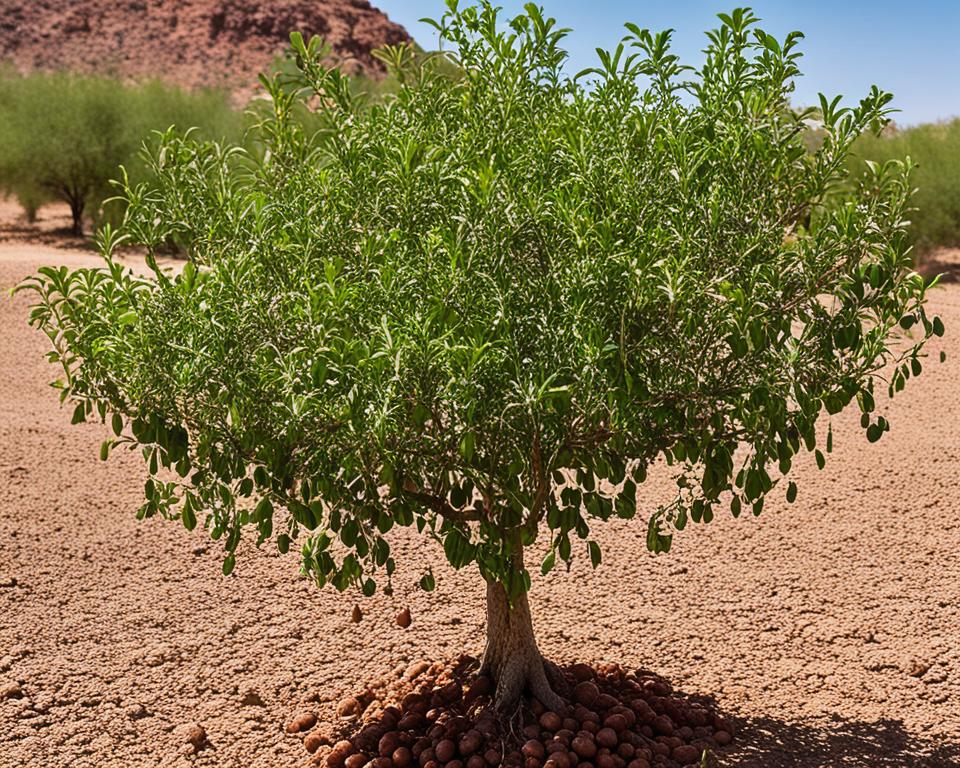
“Jujube cultivation represents a harmonious partnership between nature and human ingenuity, offering a blueprint for a more sustainable agricultural future.”
The Jujube Industry: A Growing Global Market
The jujube industry is growing fast, thanks to more people wanting nutritious and versatile superfoods. Countries like China, India, and the United States are boosting their jujube trade and exports. This is because the jujube is getting more popular.
China leads the world in jujube production, making up over 80% of the global total. Its large jujube farms and advanced growing methods put it at the forefront of the jujube industry. India is also growing its jujube production, thanks to its cultural importance and health benefits.
The jujube global market is set to expand, thanks to more people learning about its nutritional value and uses in cooking. Jujube products like dried fruits, candies, and juices are now reaching markets around the world.
| Top Jujube-Producing Countries | Production Volumes (Metric Tons) | Market Share (%) |
|---|---|---|
| China | 4,500,000 | 80% |
| India | 700,000 | 12% |
| United States | 150,000 | 3% |
| Other Countries | 200,000 | 5% |
The jujube industry is changing, with new products and marketing strategies helping it grow worldwide. Its unique taste, health benefits, and many uses make it a key player in the jujube global market and jujube trade.
“The jujube industry is on the cusp of a global revolution, as consumers worldwide discover the remarkable qualities of this ancient superfruit.”
Jujube: A Superfruit for the Modern Age
The jujube is an ancient superfruit that’s gaining popularity today. It’s packed with nutrients and has many uses in food and health products. This makes it a great choice for those looking for natural, healthy foods.
More people are discovering the jujube, making it a top pick for food and wellness items. It fits well with today’s trend of wanting real, healthy ingredients that are easy to add to daily meals.
Jujube Superfruit: Nutritional Powerhouse
The jujube, also known as the Chinese date or Indian plum, is full of vitamins and minerals. It has vitamins C, A, and B-complex, plus iron, calcium, and magnesium. These nutrients make it a great choice for health lovers.
It’s also packed with flavonoids and polyphenols, which are good for your health. Adding jujube to your diet can boost your health in many ways.
Jujube’s Culinary Versatility
The jujube is also versatile in the kitchen, making it popular among cooks. You can eat it fresh, dried, or candied. Its sweet taste fits well in many dishes, from snacks to desserts.
This makes it easy for people with different tastes to enjoy. It’s a superfruit that can be used in many recipes, making meals more interesting.
Jujube: A Sustainable Superfruit
Jujube farming is good for the planet, making it a great choice for eco-friendly eaters. It needs less care to grow and is tough, which is good for the environment. This makes it a superfruit that fits with today’s focus on being green.
| Jujube Health Trends | Jujube Modern Uses |
|---|---|
|
|
The jujube is a superfruit that combines ancient wisdom with modern health trends. It’s full of nutrients, easy to use in cooking, and grown in a way that’s good for the planet. This makes it a top choice for today’s health-conscious consumers.
“The jujube is a true testament to the timeless power of nature’s gifts. As we seek to nourish our bodies and minds with wholesome, functional ingredients, this ancient superfruit is ready to take center stage in the modern wellness landscape.”
Conclusion: Embracing the Ancient Wisdom of Jujube
The jujube is a superfruit with a long history. It has nutritional benefits, culinary uses, and health benefits. It has traveled from Asia to the world, showing both traditional and modern value.
By using ancient knowledge about the jujube, we open up new tasty and healthy options. This fruit is full of vitamins, minerals, and antioxidants. We can eat it fresh, dried, or candied, making many culinary creations better.
Exploring the jujube shows us nature’s lasting gifts. Adding this superfruit to our lives lets us enjoy its great taste. It also connects us to nature and the food it gives us.
